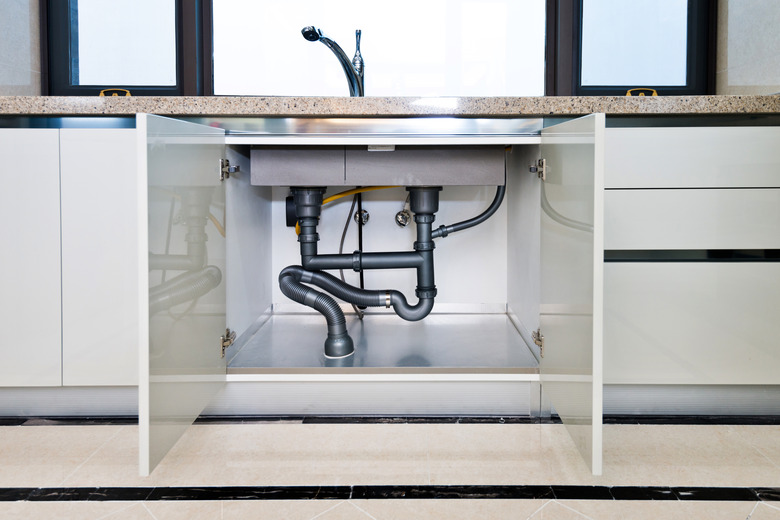Can I Use Muriatic Acid To Unclog A Drain?
When you have a stopped drain, you want to clear it as quickly as possible. That may prompt you to reach for highly corrosive chemicals, such as muriatic acid. For your safety, as well as the safety of the pipes and the environment, you should think twice about doing this. There are better ways to get the job done.
Muriatic acid is another name for dilute hydrochloric acid (HCl), and HCl is one of the strongest acids there is. Masons use it to wash efflorescence off of brick because it readily dissolves mineral salts. It doesn't work as well on organic matter, although the HCl in the human gut does a pretty good job breaking down food so the body can digest it.
Muriatic Acid Drain Cleaner Dangers
Muriatic Acid Drain Cleaner Dangers
Strong commercial drain cleaners may contain an acid, but it's usually sulfuric acid, which dissolves organic matter better than HCl. If you're going to use muriatic acid to clean a drain line, you'll probably reach for a solution sold in the paint or masonry section of the hardware store. You'll want to dilute it, and that could be hazardous.
If you make the mistake of pouring water into the acid bottle, a chemical explosion could result and you could get burned or blinded. You should always pour acid into water — never the other way around. So consider what happens if you pour the solution into a clogged drain and it just sits in the P-trap without dissolving the clog, which is entirely possible.
Someone could come along and pour water into the drain and the resulting reaction could eject liquid from the drain or even burst the pipes. Moreover, the reaction releases enough heat to potentially melt plastic pipes. Don't even think about following a muriatic acid treatment with a lye drain cleaner or you'll be witness to a similarly violent incident.
Using Muriatic Acid Anyway
Using Muriatic Acid Anyway
Some people subscribe to the daredevil approach to drain cleaning, which is to use the strongest chemicals available. If you're of this persuasion, go right ahead, but if you're on a septic system, say goodbye to the beneficial bacteria that dissolve the waste in the tank. Without them, the sludge level of the tank will rise and the leach field will eventually clog, but at least you'll have a clear drain — maybe.
The same is true if you use a sodium hydroxide drain cleaner, such as Drano. Sodium hydroxide is caustic, not acidic, but it also kills beneficial bacteria. Moreover, neither muriatic acid nor sodium hydroxide are better for municipal waste systems or the environment than they are for septic systems.
How to Clean a Clogged Drain
How to Clean a Clogged Drain
A sink plunger is an underrated tool that many people use as an afterthought rather than as a first choice, but it's the number-one drain cleaner in the home. When used properly, with the sink partially filled with water and the air purged from under the cup, a plunger can clear 90 percent of sink clogs. A drain bladder, which you insert into the pipe and fill with water, is even more effective, but unlike a plunger, it isn't standard household equipment.
Other mechanical methods for busting clogs include using an auger, or snake, and disassembling the pipes if they're accessible. The latter method becomes hazardous if the drain is full of acid, which is another reason to avoid using a muriatic acid drain cleaner in the first place.
If you prefer the chemical approach, enzyme-based drain cleaners efficiently digest the organic matter that causes clogs, although they take some time to work. You can also clear a drain by pouring in a 1/2 cup of baking soda followed by a quart or so of a 50/50 solution of vinegar and hot water. The foaming action makes this a fun way to clear your drains.
